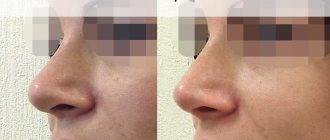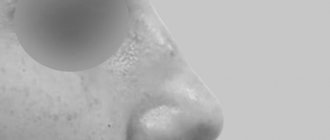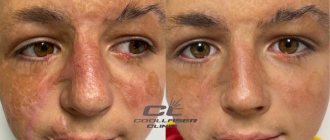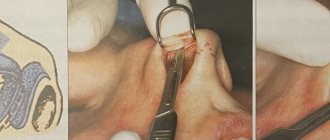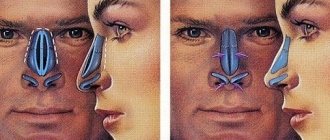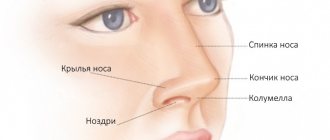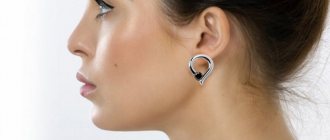The nose is one of those body parts that haunts half of the human population. Especially after it became possible to make adjustments to natural data. If there is a fashionable trend for plastic surgery, then rhinoplasty - correction of the shape of the nose - may well top the top. Plastic surgery clinics compete with each other for patients, attracting attention with colorful photos of the owners, often the owners, of new graceful noses. The desire to correct this particular part of the body is understandable: the nose “sets the tone” for all facial features. Sometimes the “before” and “after” photos are amazing – there are so many different faces looking at you. But is it always necessary to chase changing fashion? Should we expect miracles from plastic surgery? We will discuss these and other pressing issues with Aram Grigoryan .
Indications and contraindications. Are there non-surgical rhinoplasty methods?
There is often a situation when, after an examination, the doctor can recommend to the patient two operations, rather than one - rhinoplasty along with septoplasty: such a complex operation involves both aesthetic changes (rhino-) and work with the nasal septum (septo-).
“Rhinoplasty corrects congenital or acquired aesthetic defects of the nose as a result of injury or an accident. Septoplasty is done for medical reasons, in order to improve breathing if there is a curvature of the nasal septum,” the expert clarifies.
According to Aram Grigoryan, rhinoplasty should always be accompanied by improved breathing. And any qualified plastic surgeon who has experience in this field always takes this point into account. At a minimum, rhinoplasty should not worsen breathing. Therefore, in 90% of cases, this will be a rhino-septoplasty operation: work with external changes and rhinoplasty of the septum.
Contraindications for nose surgery can only be general medical ones. Or if your plastic surgeon does not see the need for surgery or understands that he will not make a better nose than the existing one. In this case, the surgeon has the right to refuse the patient.
“As for non-surgical rhinoplasty, it is rather a cosmetic procedure to correct minor imperfections, such as a small hump. In some cases, it can be used, but very carefully, without touching the vessels and ligaments. Gel fillers injected into the nasal tissue create pressure and compression on important nasal structures and can even promote atrophy,” says Aram Grigoryan.
pixabay.com/
Examination before the procedure
It is very important to undergo an examination before the correction; the outcome of the operation and the patient’s well-being depend on this. Key examination recommendations:
- electrocardiogram;
- fluorography;
- basic preoperative tests
In some cases, your doctor may recommend that you undergo additional tests to clarify the picture. It is also necessary to do a computed tomography scan of the nose and paranasal sinuses. During the first and subsequent examinations, the doctor must carefully examine the auricle and assess the degree of readiness of the cartilage for transplantation.
What is closed rhinoplasty?
Closed and open rhinoplasty of the nose are two different methods of nose correction. In open rhinoplasty, the surgeon makes an incision and separates the skin over the cartilage. Access to the nasal septum is as convenient as possible; the septum itself can also be removed for correction and then returned to its place and secured to the bone.
The closed method is more gentle and involves fewer incisions. Unlike open rhinoplasty, this method does not damage the arteries near the tip of the nose and the recovery period will be shorter. The soft tissues are stitched together, leaving almost no scars.
REASONS FOR REVISIONAL RHINOPLASTY
- Technical errors during surgery, unnatural appearance of the nose.
- Unpredictability of the behavior of the scar-adhesive process after the operation.
Complications can occur despite a technically well-performed operation. According to statistics, the probability of secondary rhinoplasty is 8-15%. The structural reconstruction must be precise to create the appearance of a beautiful nose, which will balance the patient's facial features. The structure must be strong enough to withstand the stress created by the scar tissue that has formed during the healing period of a previously operated nose. The breathing function of the nose must be maintained by strengthening the elements of the nose that are responsible for keeping the airways open. Some of the most common reasons for secondary rhinoplasty include: unnatural looking nose; dysfunction of external respiration; crooked nose or tip of the nose; displacement of implants; deviated nasal septum; implant displacement. Revision rhinoplasty can not only improve air flow through the nose, but also reduce snoring, sinus problems, and seasonal allergy symptoms.
Can any nose shape be made “to order”, for example, based on fashion trends?
As with other plastic surgery, trends in rhinoplasty exist. Today, social networks play a big role in creating “fashionable” nose trends. Unfortunately, patients do not always understand that photographs on the Internet are a lot of artistic work, a high percentage of retouching, corrections, correct lighting, and the work of a stylist and makeup artist. It doesn't look like this in real life. “We have to explain that these “sharpener” noses are not so good in real life,” explains the expert.
If the patient came with a specific ideal vision of his nose, for example, brought a photo of his favorite actor, then the surgeon, of course, will do everything to come as close as possible to the desired shape. But a lot also depends on the initial data and anatomical features of the patient. If, for example, a person has thick, porous skin, and he wants a chiseled small nose, like on Instagram, then such a result is hardly achievable.
How does autotransplantation occur?
- First of all, the surgeon marks the area where the intervention will take place. At the tip of the nose, a marker is used to mark the future location of the arches. And in the place where the cartilage will be extracted for transplantation, the future incision is marked;
- Next, the required cartilage is extracted. To anesthetize the patient, endotracheal anesthesia is used, and a 0.5% solution of ice-caine with adrenaline is injected. After which the surgeon makes a small size in the depth of the postauricular sulcus. The posterior surface of the auricle is released above the cartilage. The projection of the point of the helix stalk is marked with a needle;
- Relative to the marked point, the cartilage that will be extracted is marked;
- The cartilage is excised according to the markings applied;
- After which the skin of the outer surface of the ear is mobilized in two directions, from the site of the extracted cartilage;
- The edges of the ear cartilage are sutured using vicryl, without gaps, with a wrapping suture.
- A drainage system is installed for 24 hours to remove blood.
What is nasal tip rhinoplasty?
Rhinoplasty of the tip of the nose is a partial correction of the shape of the nose, affecting only this part. The surgeon may recommend it as more gentle. This operation is indicated for patients whose nasal tip is irregularly shaped from birth, for example, teardrop-shaped, forked, hooked, curved from birth, disproportionately wide, has too wide, or less often too narrow nostrils. You can also change the angle of your nose. For a plastic surgeon, this is jewelry work; every millimeter is important. As in other cases, the patient’s initial anatomy, the condition of the cartilage and the thickness of the skin play a big role.
As follows from the above, with this method of correction, problems with a hump on the back of the nose cannot be solved. This will require more thorough intervention. The advantages include the possibility of local anesthesia.
pixabay.com/
SECONDARY RHINOPLASTY OPTIONS
- Minor correction to the previous result. The patient may be satisfied with the overall appearance of the nose but desire some improvement. In this case, the patient, as a rule, trusts the surgeon who performed the operation.
- Correction of a previous unsuccessful result.
Nasal reconstruction can be technically and aesthetically challenging. The nasal septum, the most important building block for nasal surgery, is often partially or completely removed. The cartilage and bones that create the shape of the nose have already been changed and deformed. The skin has become thicker and less elastic. Breathing is impaired. Often after resection or removal of nasal cartilage, scar tissue replaces most of the structures of the nasal framework. The components of the nasal structure must be re-created.
What are the stages of recovery after rhinoplasty?
“The rehabilitation period after rhinoplasty surgery is divided into several stages. The first is about two weeks, from 7 to 14 days. These days the patient wears a plastic splint. Bone consolidation occurs and maximum post-traumatic edema disappears. The partition contains splints - silicone plates; at the end of the first stage we remove them. When we removed the splint, the main rehabilitation was completed,” says Aram Grigoryan.
The next stage begins when the main swelling has gone. We have already received the shape of the nose after rhinoplasty that we wanted, all the changes are as visible as possible, the patient likes everything. But minimal swelling remains, and it remains at the tip and dorsum of the nose. After about 3-6 months, 60% of the swelling goes away. The remaining 20-30% of the swelling may take up to a year to go away. “Again, if the skin is thick or it is a revision rhinoplasty, swelling may remain longer and rehabilitation may last 1.5 years, or 2, or even more,” the expert assures. “If the skin is thin, rehabilitation will be noticeably faster.”
Also, the speed of the rehabilitation process depends on the skill of the surgeon and the correct choice of anesthesia. The larger the area of the operation and the tissue trauma, the greater the swelling, and the longer the recovery period. All this affects the shape of the nose. If during the process of rhinoplasty the surgeon did the work carefully, scrupulously, especially in the layers, the swelling is minimal, then rehabilitation will go much faster.
“The swelling itself can be removed; the doctor will individually select a drug for you for this. Plus physiotherapy and massages. If the swelling is uniform and corresponds to a certain time of the rehabilitation period, then it is not necessary to do anything with it, it will go away on its own. Visually, swelling does not draw attention to itself,” our expert comments.
OPERATION AND REHABILITATION
Revision rhinoplasty is performed under general anesthesia, allowing the surgeon to concentrate on the operation. Most patients can return to work within a few days after surgery. After about 6 weeks, the nose will look quite good, although swelling will remain. The reason the swelling lasts is due to the disruption of normal lymphatic drainage for recovery, which takes time. The formation of scar tissue after surgery also leads to long-term increased tissue volume. Approximately 75-80% of the swelling goes away within the first month. The last 30% of swelling can take up to one year or more to resolve, depending on many factors.
We can talk about the final result after secondary rhinoplasty only after 12-18 months, when the nose acquires its final shape and size.
How often and what are complications and can they be avoided?
Complications after surgery can be divided into two types. The first is general surgical, such as inflammation, suppuration, bleeding. This happens with absolutely any operation. The patient is informed about them when signing the contract. The clinic takes responsibility for creating sterility in the operating and post-operative units. The patient, in turn, undertakes to follow all recommendations of the rehabilitation period prescribed by the doctor.
The second type of complications is dissatisfaction with the resulting shape of the nose, although, strictly speaking, this is difficult to attribute to medical complications. These are rather undesirable phenomena. They are also divided into two types: the first is the patient’s own perception, the second is clearly expressed defects. Obvious signs of unsuccessful rhinoplasty include curvature, recessed tip, and breathing problems. This needs to be adjusted, but not earlier than six months later.
pixabay.com/
A surgeon always deals with a living organism and it is difficult to predict how this organism will behave in a given situation. There is always a chance that something will go wrong. We are, of course, not talking about obvious noticeable defects. Even with a competently performed operation, as correct as possible, the result may be unsatisfactory. “For example, there was a large curvature of the nose, it was straightened and fixed. But living tissue has the concept of “shape memory,” the phenomenon of returning to its original state. This is unpleasant, but fixable. If there is a dialogue between the patient and the doctor, they hear each other, then in the postoperative period this can all be resolved by certain procedures. Dialogue between doctor and patient is 50% of a successful result. There are no impossible tasks, almost all problems are solvable,” says Aram Grigoryan.
Rhinoplasty “before” and “after” photos: should you trust such photos?
Photos of profiles of operated patients are a separate genre. Each plastic surgery clinic has in its arsenal more than a dozen such photo collections. However, for anyone who decides to undergo surgery to correct the shape of the nose and has already decided where to have rhinoplasty, it is important to remember that more than one month passes between the first and last photo. The bruises and swelling have already gone away, the nose has “fallen back into place”, the patient has rested, tidied up his appearance, maybe even changed his hairstyle. On the Internet you can find many stories of how girls were finally able to afford a certain haircut after nose reduction surgery. It's no secret that a large nose does not always decorate a girl's face. A small upturned nose is in fashion.
When a person is not ready for a fairly long rehabilitation period and wants to get a new nose in a month, disappointment may set in. A real nose after rhinoplasty behaves like a living organism and does not always live up to the expectations placed on it. This moment is fraught with conflicts with the surgeon and the medical organization as a whole.
There is only one conclusion here: the ideal result in a photo is half an artistic creation, so if you want to get a new nose shape, be patient, stay in touch with your surgeon and strictly follow all his recommendations. Believe me, the specialist is no less interested in a successful result than you are.
How is rhinoplasty surgery performed abroad?
To perform rhinoplasty, the patient is placed under general anesthesia or operated on using local anesthesia. The duration of the procedure and the effects of anesthesia depend on the complexity of the case and the extent of the surgical intervention.
The doctor performs rhinoplasty using a closed or open method, which determines the nature of the operation. When performing an open rhinoplasty, the doctor, after all manipulations, sews the external incisions with surgical nylon thread. With closed rhinoplasty, internal sutures are placed using threads, which themselves dissolve over time.
After sewing the tissues together, a special bandage is applied to the nose, and a splint is attached on top. This bandage performs a fixing and protective function, and also reduces swelling. Silicone splints or special tampons are placed into the openings of the nostrils.
Patients who have undergone rhinoplasty to straighten a deviated septum immediately note a good effect - improved sleep quality and overall well-being. Plastic surgeons from Turkey, South Korea and the Czech Republic receive the most positive feedback from patients.
